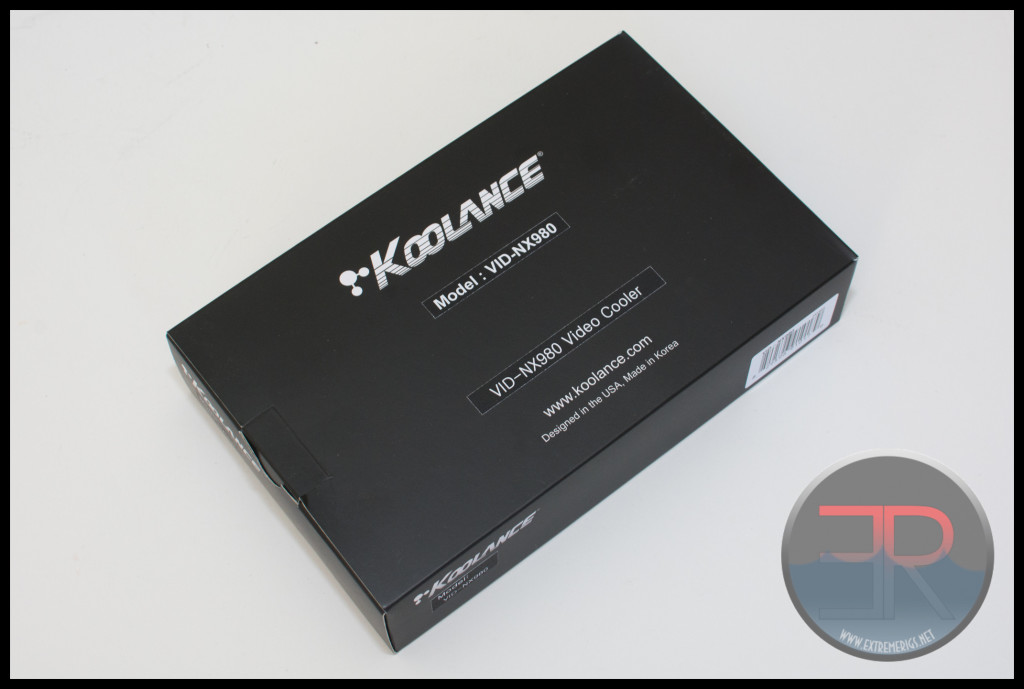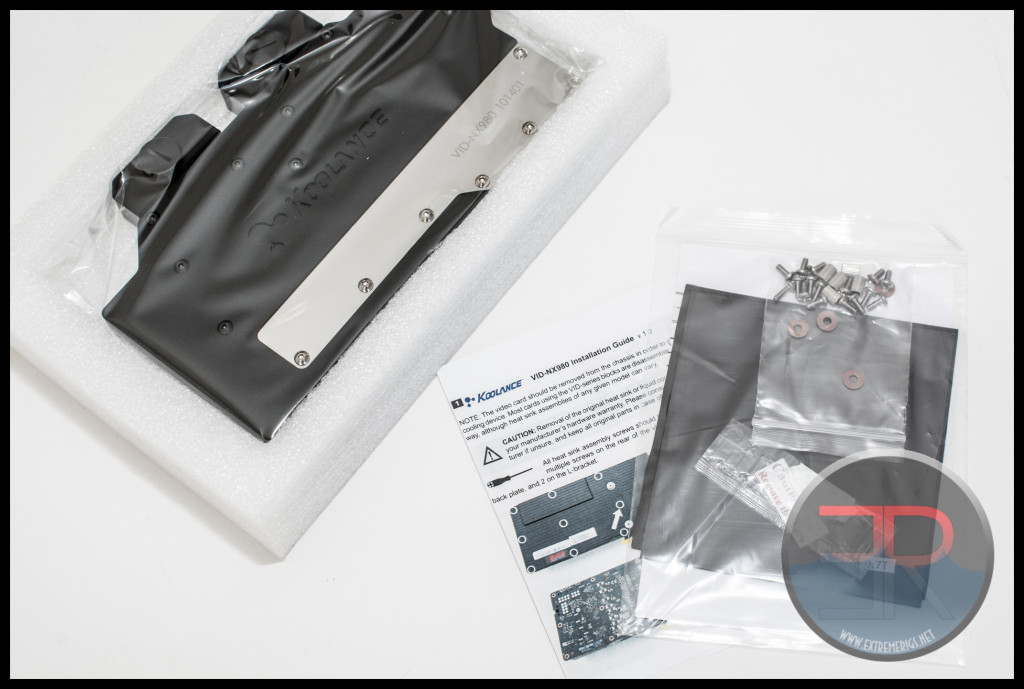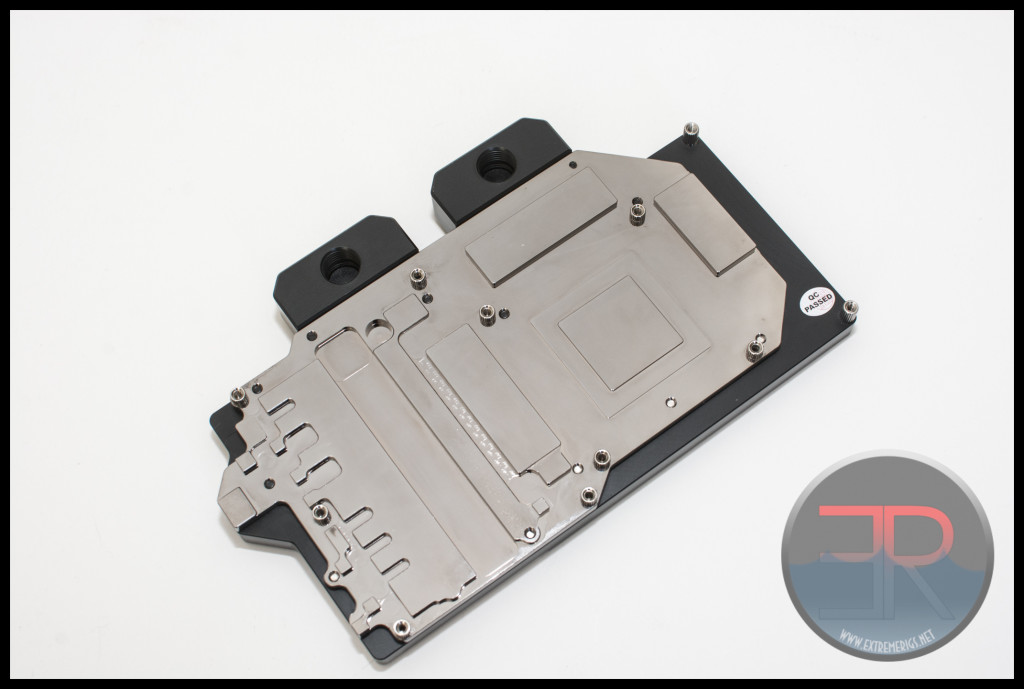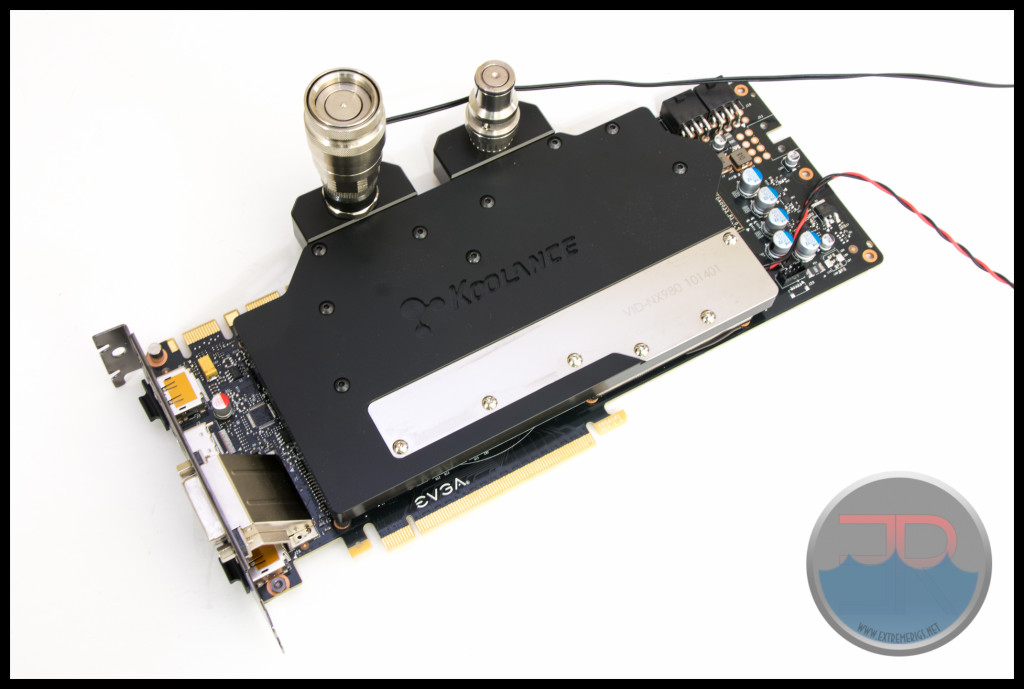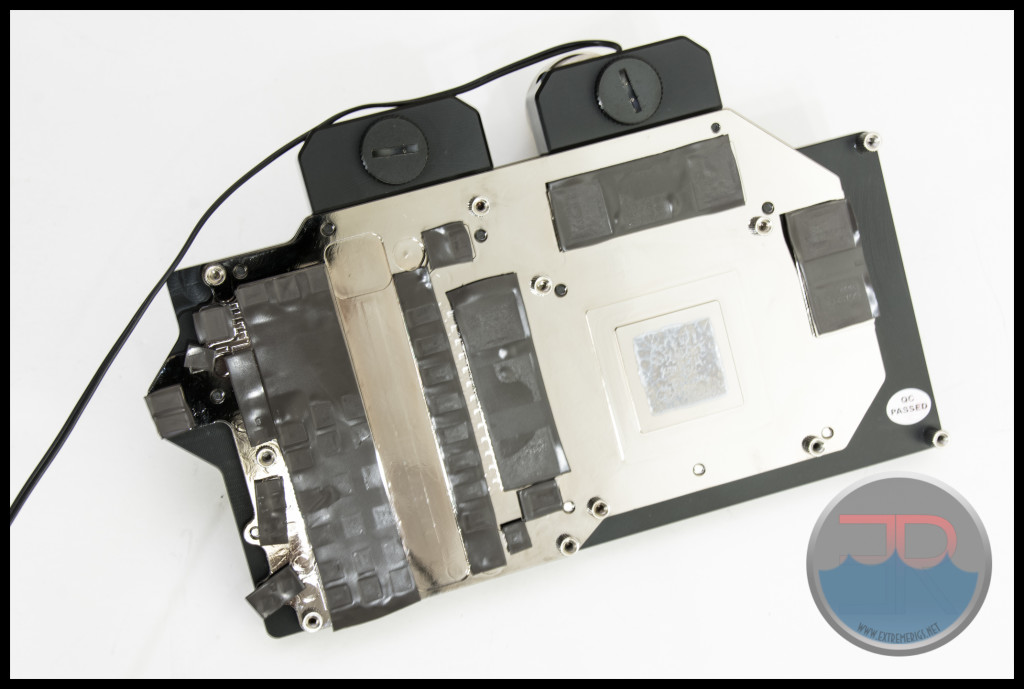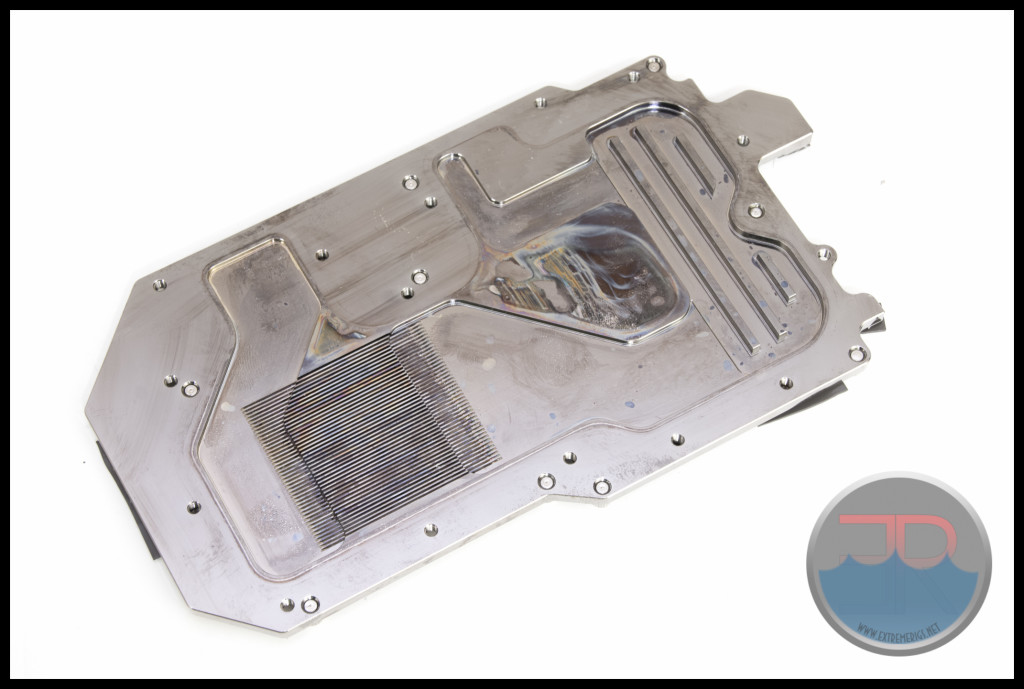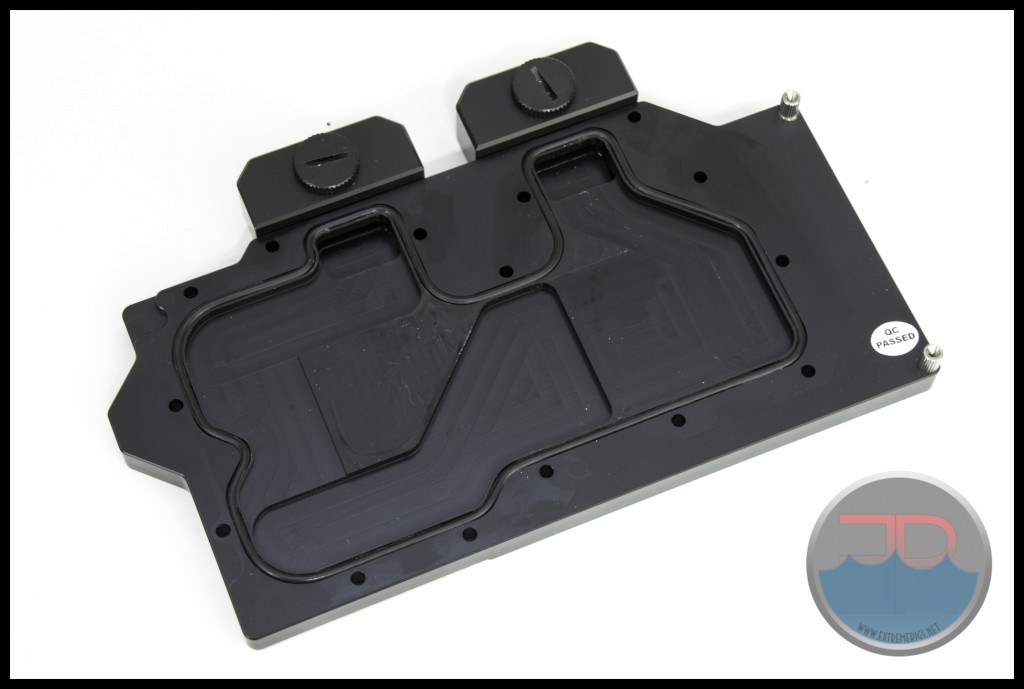Koolance VID-NX980 Review – Waterblock for GTX 980
In this review we’ll be taking a look at Koolance’s after market watercooling block for NVidia’s GTX 980 reference card. This is part of our GTX 980 water block round up. As always a big thanks to Koolance for supporting ExtremeRigs with a test sample:
Koolance’s packaging for the GTX980 is as good as any. While the black is a little boring – the protection for the block itself is the best in the business:
Included in the box are accessories:
– Instructions
– Technical drawing detailing thermal pad placement
– Two large sheets of thermal pads (0.7mm and 1.0mm thickness)
– Screws, washers and nuts
– Thermal Interface Material (“TIM” aka thermal goop)
For the R9-290x block roundup, we felt that Koolance’s quality had slipped a little. This block however was possibly the best we’ve ever seen from them:
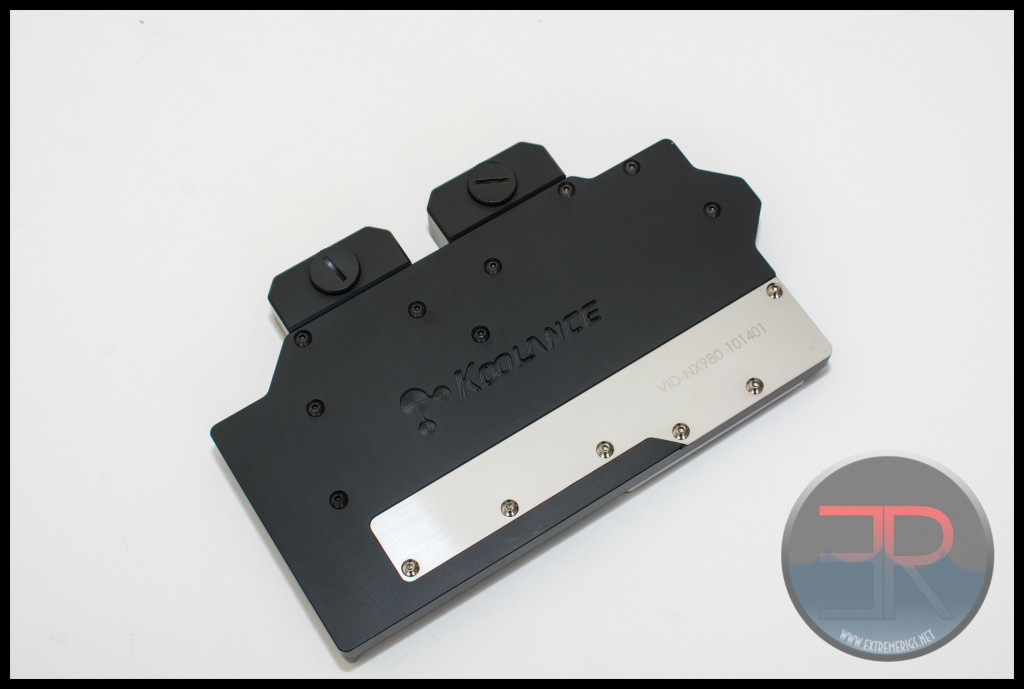 The machining was perfect and the plating was too:
The machining was perfect and the plating was too:
A nice touch was the inclusion of black stop fittings to match the black acetal bridges. We also love that Koolance now offer bridges to connect each individual port for use with multiple GPUs.
The downside however is that Koolance is now one of only two companies to offer a GPU water block without a backplate. This is less of an issue for the GTX980 where reference cards will come with a backplate anyway. We tested on an EVGA GTX980 SSC ACX which is a reference compatible PCB, however it does not come with a backplate, hence temperatures with a backplate will be slightly different. It is worth noting that the screws supplied did work even without the expected backplate.
Koolance for the first time put thermal pads on many components beyond just the memory and VRM chips. Indeed they are cooling extra chips and even capacitors from the VRM section. No chokes however are cooled which I believe to be one of the larger heat contributors to the VRM section. Unlike EK they also did not take advantage of the area of PCB where VRM phases are not populated on the PCB. The thermal pads were however plenty and the instructions were clear.
The cooling engine itself is huge relative to the actual size of the die. Ignore the tarnish on nickel. This block sat with a small a mount of water in it for a while before I shot this pic:
The acetal is of course also machined to increase flow. The unit is sealed with a single o-ring.
Onwards to testing!









